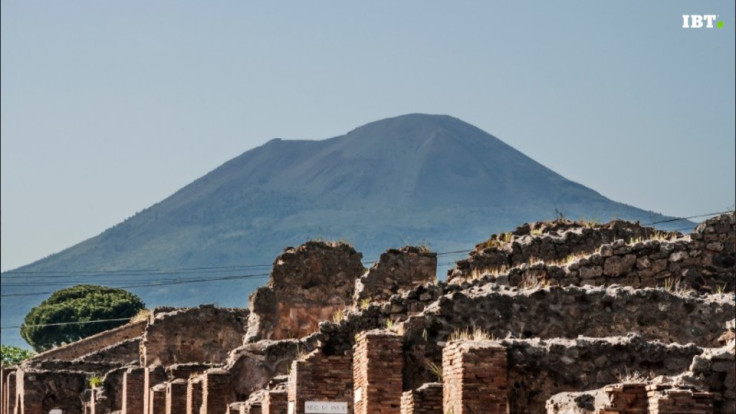Watch 3D reconstruction of rich Pompeii home as it stood before tragic Vesuvius eruption
Archaeologists have represented the home of a rich man of Pompeii before the catastrophic eruption of 79 AD.
The eruption of Mount Vesuvius in 79AD was one of the most destructive natural disasters in European history. It wiped out several Roman settlements, including that of the city of Pompeii where inhabitants had constructed impressive houses and elaborate buildings.
Now – in 3D-animation – archaeologists have reconstructed a beautiful and luxurious Pompeii house that would have stood just before the catastrophe, allowing us to get a glimpse of the rich architecture and culture that disappeared during the eruption.
The reconstruction was carried out in the context of the Swedish Pompeii project – a fieldwork project initiated at the Swedish Institute in Rome – which focuses on a specific Pompeian city-block known as Insula V 1.
This area was situated at the crossing of two of Pompeii's main paths, and would have been a commercial hub and place of choice for some of the highest social groups to live.
The 3D house that appears in the archaeologists' video was part of this city-block, and belonged to Lucius Caecilius Lucundus, a rich banker from Pompeii. Although his business correspondence has revealed that he was not part of the elite, he is believed to have been particularly wealthy, and his home would have reflected his sophisticated lifestyle.
High-tech and traditional methods
The team, led by researchers at Sweden's Lund University, used a variety of sources to imagine what the house of Caecilius and his family may have looked like. They combined the use of advanced technologies, with more traditional archaeological excavation work.
They conducted 3D scanning of the Pompeii city-block during expeditions, between 2011 and 2012. They also analysed sources such as decorations, artefacts and paintings still preserved at the site, hypothesising where they would have stood in the house and what role they would have performed.
Finally, their interpretations of what architecture and lifestyle in Pompeii was like nearly 2,000 years ago – based on years of research conducted in the ancient Roman settlement –helped them come up with the most detailed 3D house model as possible.

Decorated altar and house full of light
In their video, the archaeologists have not added virtual characters to allow viewers to focus on the house. However, they say the main room would have been filled in the morning with visitors and Caecilius' business partners, and in the afternoon with women working and weaving. Slaves and the owner's extended family would also have inhabited the premises.
The home was designed to let as much light in as possible in, so that Caecilius could work during the day. The most beautifully decorated room was in fact his office – the "tabularium".
Another interesting artefact recovered at the site – and included in the 3D representation – is a large altar, which would have been found in the main room. The decorations that adorn it tell the story of an earthquake which occurred in Pompeii 70 years before the Vesuvius eruption.
The researchers have also described, in a vivid manner, the house's neighbourhood. In Insula V1, two large wealthy estates similar to this one would have also been found, as well as a tavern, a laundry, a bakery, and several gardens. In one of these garden, taps for a fountain were left running as Mount Vesuvius erupted.
The complete findings are reported in Scires It.
© Copyright IBTimes 2025. All rights reserved.






















